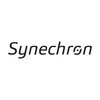Filter interviews by
Insoft.Com Senior Software Engineer Interview Questions and Answers
Insoft.Com Senior Software Engineer Interview Experiences
1 interview found
I was interviewed before Jan 2024.
(2 Questions)
- Q1. OOPS and SQL Server Questions
- Q2. Basics of .NET Core and Azure
(2 Questions)
- Q1. Technical Experience about the previous company work
- Q2. Explain the challenge you faced in previous company task
Top trending discussions






Interview questions from similar companies

I applied via Naukri.com and was interviewed in Nov 2024. There was 1 interview round.
(16 Questions)
- Q1. What are custom hooks in React, and what are their use cases? Additionally, can you provide an example of a custom hook that performs an API call and utilizes the retrieved data?
- Ans.
Custom hooks in React are reusable functions that allow you to extract component logic into separate functions for better code organization and reusability.
Custom hooks are created using the 'use' prefix and can be used to share logic between components.
Use cases for custom hooks include fetching data from an API, handling form state, managing local storage, and more.
Example of a custom hook for API call: const useFetc...
- Q2. What is the difference between useMemo and useCallback in React?
- Ans.
useMemo is used to memoize a value, while useCallback is used to memoize a function.
useMemo is used to memoize a value and recompute it only when its dependencies change.
useCallback is used to memoize a callback function and prevent unnecessary re-renders.
Example: useMemo can be used to memoize the result of a complex computation, while useCallback can be used to memoize an event handler function.
- Q3. What is the difference between class-based components and functional components in React?
- Ans.
Class-based components use ES6 classes and have lifecycle methods, while functional components are simpler and use functions.
Class-based components use ES6 classes to create components, while functional components are created using functions.
Class-based components have lifecycle methods like componentDidMount and componentDidUpdate, while functional components do not.
Functional components are simpler and more lightweig...
- Q4. How can you implement the lifecycle of a React component in a functional component?
- Ans.
Implementing the lifecycle of a React component in a functional component
Use the useEffect hook to replicate lifecycle methods like componentDidMount, componentDidUpdate, and componentWillUnmount
Pass an empty array as the second argument to useEffect to mimic componentDidMount
Pass a variable or state as the second argument to useEffect to mimic componentDidUpdate
Return a cleanup function inside useEffect to mimic compo
- Q5. What are the various state management techniques available in React?
- Ans.
Various state management techniques in React include Context API, Redux, and local state.
Context API: React's built-in solution for passing data through the component tree without having to pass props down manually at every level.
Redux: A popular state management library for React applications, allowing for a centralized store to manage application state.
Local state: Managing state within individual components using us
- Q6. What is the architecture of Redux, and what purposes do middlewares serve within it?
- Ans.
Redux is a predictable state container for JavaScript apps. Middlewares are functions that intercept actions before they reach the reducer.
Redux follows a unidirectional data flow architecture.
Middlewares in Redux are functions that can intercept, modify, or dispatch actions.
Common use cases for middlewares include logging, asynchronous API calls, and handling side effects.
Examples of popular Redux middlewares are Redu...
- Q7. What is hoisting in JavaScript?
- Ans.
Hoisting in JavaScript is the behavior where variable and function declarations are moved to the top of their containing scope during the compilation phase.
Variable declarations are hoisted to the top of their scope, but not their initializations.
Function declarations are fully hoisted, meaning they can be called before they are declared.
Hoisting can lead to unexpected behavior if not understood properly.
- Q8. What is event bubbling in JavaScript?
- Ans.
Event bubbling is the propagation of events from the target element up through its ancestors in the DOM tree.
Events triggered on a child element will 'bubble up' and trigger on parent elements.
Event listeners can be attached to parent elements to handle events from multiple child elements.
Stopping event propagation can be done using event.stopPropagation() or event.stopImmediatePropagation().
- Q9. What are block scope and function scope in JavaScript?
- Ans.
Block scope and function scope are two types of scopes in JavaScript that determine the visibility and accessibility of variables.
Block scope refers to the visibility of variables within a block of code enclosed by curly braces. Variables declared with 'let' and 'const' have block scope.
Function scope refers to the visibility of variables within a function. Variables declared with 'var' have function scope.
Variables de...
- Q10. Have you had experience working with semantic tags in HTML?
- Ans.
Yes, I have experience working with semantic tags in HTML.
Used semantic tags like <header>, <nav>, <main>, <section>, <article>, <aside>, <footer> for better structure and SEO.
Understand the importance of using semantic tags for accessibility and search engine optimization.
Semantic tags help in organizing content and making it more readable for developers and browsers.
- Q11. What are the various methods for creating an object in JavaScript?
- Ans.
Various methods for creating an object in JavaScript include object literals, constructor functions, ES6 classes, and Object.create() method.
Object literals: var obj = { key: value };
Constructor functions: function ObjectName() { this.key = value; } var obj = new ObjectName();
ES6 classes: class ClassName { constructor() { this.key = value; } } var obj = new ClassName();
Object.create() method: var obj = Object.create(pr
- Q12. What are the differences between shallow copy and deep copy in JavaScript?
- Ans.
Shallow copy only copies the references of nested objects, while deep copy creates new copies of nested objects.
Shallow copy creates a new object but does not create copies of nested objects, only copies their references.
Deep copy creates a new object and also creates new copies of all nested objects.
Shallow copy can be achieved using Object.assign() or spread operator, while deep copy can be achieved using JSON.parse(
- Q13. What will be the output of the following JavaScript code fragment: `const a; function test() { console.log(a); }; test();`?
- Ans.
The code will throw an error because 'a' is declared but not initialized.
The code will result in a ReferenceError because 'a' is declared but not assigned a value.
Variables declared with 'const' must be initialized at the time of declaration.
Initializing 'a' with a value before calling test() will prevent the error.
- Q14. How can you use CSS to arrange elements in a row and column layout?
- Ans.
CSS can be used to arrange elements in a row and column layout using flexbox or grid layout properties.
Use display: flex; for a row layout and display: flex; flex-direction: column; for a column layout
Use justify-content and align-items properties to align items in the main axis and cross axis respectively
For grid layout, use display: grid; and grid-template-columns or grid-template-rows to define the layout
- Q15. Have you utilized CSS preprocessors, and if so, which ones?
- Ans.
Yes, I have utilized CSS preprocessors such as SASS and LESS.
I have experience using SASS to streamline my CSS workflow by utilizing variables, mixins, and nesting.
I have also worked with LESS to improve code organization and maintainability through features like variables and functions.
- Q16. If I have assigned different colors to an ID and a class and applied both to the same element, which color will be applied based on CSS specificity precedence?
- Ans.
The color applied will be based on the specificity of the selector, with ID having higher specificity than class.
ID has higher specificity than class in CSS
Color applied will be based on the selector with higher specificity
Example: If ID selector has color red and class selector has color blue, the color applied will be red
Interview Preparation Tips
- Javascript
- React.Js
- HTML
- CSS
Skills evaluated in this interview

(2 Questions)
- Q1. What is the internal working of a hashmap?
- Q2. Design a Least Recently Used (LRU) cache.
(2 Questions)
- Q1. What are the SOLID principles in software engineering?
- Q2. What design patterns have you worked with?

Fundamentals of Data Structures and Algorithms, including SQL.
(2 Questions)
- Q1. Basics of DSA and Algo and sql
- Q2. Basics
(2 Questions)
- Q1. Details on previus project
- Q2. B
(1 Question)
- Q1. Basics of DSA and algo ..sql

(2 Questions)
- Q1. Regarding all basic java , sprint boot questions
- Q2. More focused on Spring and microservices
(1 Question)
- Q1. Advance java questions

I applied via Approached by Company and was interviewed in Oct 2024. There were 3 interview rounds.
One coding test happen
(2 Questions)
- Q1. Java questions, spring boot framework questions
- Q2. DSA using stream api
- Ans.
Using stream API for Data Structures and Algorithms
Stream API in Java can be used to perform operations on collections like filtering, mapping, reducing, etc.
It can be used for implementing various data structures and algorithms efficiently.
For example, you can use stream API to find the sum of all elements in an array or filter out even numbers from a list.
(2 Questions)
- Q1. Java questions and spring boot questions
- Q2. One program using stream api
- Ans.
Using stream API to filter a list of numbers and find the sum of even numbers
Use Stream.filter() to filter out even numbers
Use Stream.mapToInt() to convert stream to IntStream
Use IntStream.sum() to find the sum of even numbers
Skills evaluated in this interview

I applied via Naukri.com and was interviewed in Dec 2024. There were 2 interview rounds.
(1 Question)
- Q1. Java oops concept, core java concepts
(1 Question)
- Q1. Springboot, microservices
Interview Preparation Tips

Senior Software Engineer Interview Questions & Answers
Societe Generale Global Solution Centreposted on 18 Jan 2025
I applied via Referral and was interviewed in Dec 2024. There were 2 interview rounds.
String manipulation questions easy not that much hard
(2 Questions)
- Q1. String manipulation
- Q2. Reverse a string according to it's input

Senior Software Engineer Interview Questions & Answers
Tiger Analyticsposted on 11 Jan 2025
I applied via Naukri.com and was interviewed in Dec 2024. There were 3 interview rounds.
(1 Question)
- Q1. Questions on java , spring boot , containarisation tools, coding, SOLID principles
5 coading questions were asked in it
(1 Question)
- Q1. Manegerial round

I applied via Naukri.com and was interviewed in Oct 2024. There were 2 interview rounds.
(2 Questions)
- Q1. More questions on interfaces
- Q2. Comparator related questions
(2 Questions)
- Q1. Stream api coding questins
- Q2. Database questions
Insoft.Com Interview FAQs
Tell us how to improve this page.
Interview Questions for Popular Designations
- Software Engineer Interview Questions
- Associate Software Engineer Interview Questions
- Softwaretest Engineer Interview Questions
- Software Engineer Trainee Interview Questions
- Software Developer Interview Questions
- Software Developer Intern Interview Questions
- Software Development Engineer Interview Questions
- Junior Software Developer Interview Questions
- Show more
Senior Software Engineer Interview Questions from Similar Companies
Insoft.Com Senior Software Engineer Reviews and Ratings
based on 2 reviews
Rating in categories
|
Executive Accountant
5
salaries
| ₹4.2 L/yr - ₹5.4 L/yr |
|
Software Engineer
4
salaries
| ₹2.2 L/yr - ₹7 L/yr |
|
Zoology Lecturer
3
salaries
| ₹4.2 L/yr - ₹4.2 L/yr |
|
Full Stack Developer
3
salaries
| ₹8 L/yr - ₹11 L/yr |

Cognizant

NTT Data Information Processing Services

Sutherland Global Services

Hexaware Technologies
- Home >
- Interviews >
- Insoft.Com Interview Questions >
- Insoft.Com Senior Software Engineer Interview Questions









